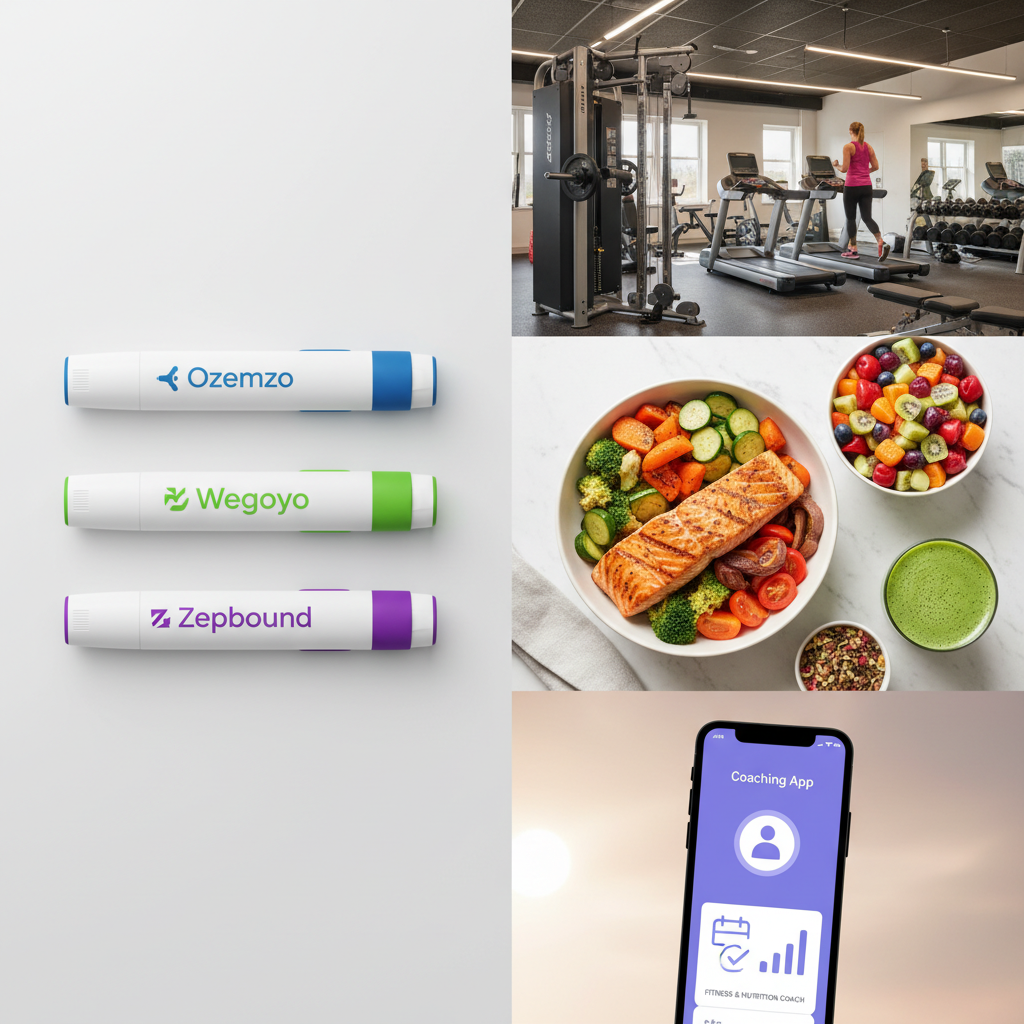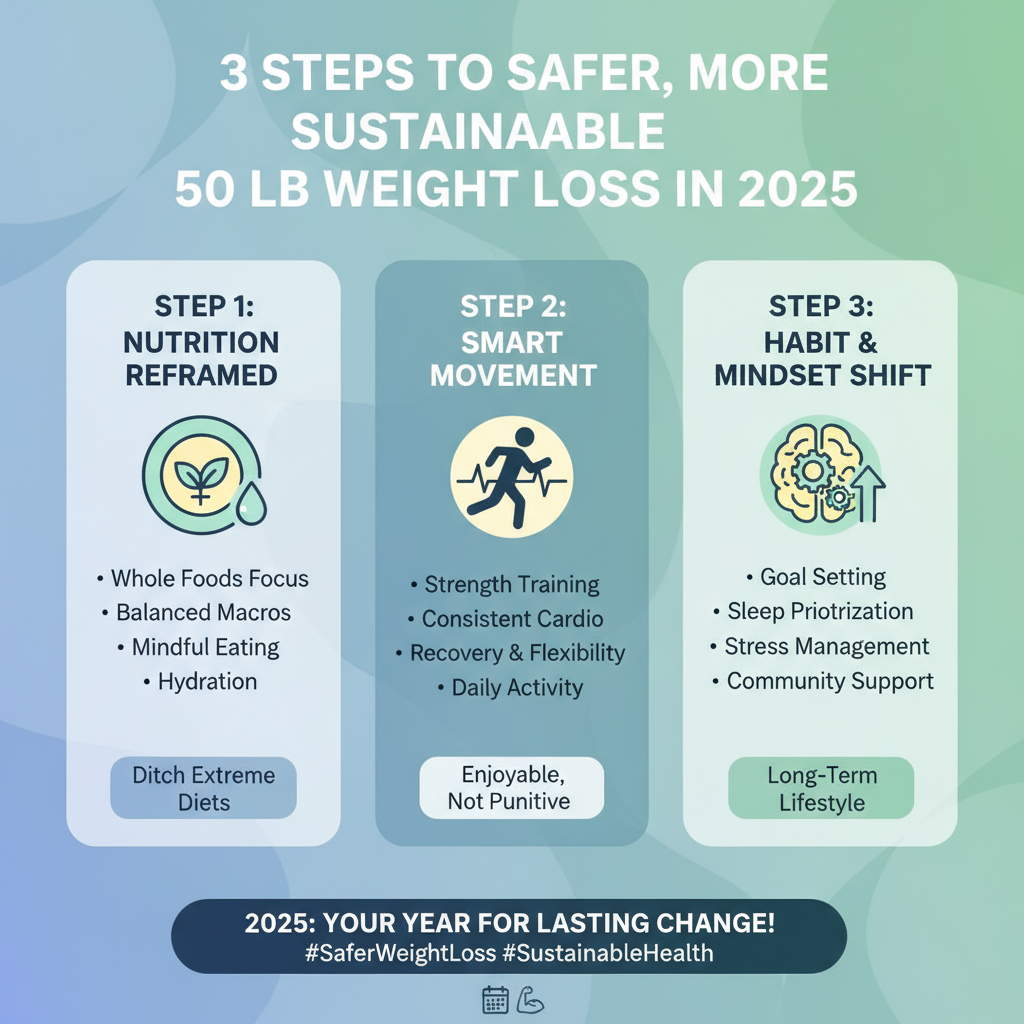
Imagine this: you’re determined to lose 50 pounds and keep it off in 2025. Should you start a GLP‑1 medication like Ozempic, Wegovy, or the new dual-incretin Zepbound? Or can you trust a premium lifestyle program—nutrition, strength training, and coaching—without meds? This isn’t just a clinical debate; it’s a dilemma played out in clinics, online forums, and TikTok feeds every day. Let’s unpack the evidence, real-world data, and new expert strategies so you can make the smartest—and safest—move for your health.
GLP-1 & Dual Incretin Medications: The 2025 Heavyweights
GLP-1 medications like Ozempic (semaglutide, ~$900/month), Wegovy (semaglutide, ~$1,300/month), Zepbound (tirzepatide, ~$1,060/month), and Mounjaro (tirzepatide, similar cost) are front and center in 2025’s weight loss conversation. These injectable drugs, originally for diabetes, now dominate the market for people aiming to lose major weight—especially 50 pounds or more.
How do they work? GLP-1s slow stomach emptying, increase satiety, curb appetite, and may reduce the brain’s drive for food (so-called “food noise”)[6]. Dual-incretins (like tirzepatide, the active in Zepbound) also target another hormone (GIP), enhancing effects. In 2024–25, trials show these drugs can deliver:

- 15–20% average body weight loss over 12–16 months—translating to 30–50+ lbs lost for many people[8]
- Better improvements in cholesterol and blood sugar vs. older medications or lifestyle-only
- Psychological benefits: less obsessive food thoughts, improved mood, and quality of life for many users[6][7]
But What About the Real-World Results?
Here’s the catch: the “real world” weight loss is less dramatic than in trials. A major 2025 study found that in everyday life, people using GLP‑1s lost about 8% of body weight with semaglutide and 12% with tirzepatide after one year, compared to 15–20% in clinical trials. Why the gap?
- High discontinuation rates: 50% of real-life users stop within a year, versus 14–17% in trials[2]
- Lower average dosing (due to side effects or cost)
- Insurance denials and high out-of-pocket costs
Pro Tip: If you want “trial-level” results, persistence is key. Longer duration, full dosing, and staying engaged with a support team matter.
Lifestyle-Only Programs: Tried, True, but Slower?
Premium lifestyle programs—whether classic Weight Watchers, Noom, Omada, Optavia, or bespoke nutritionist + personal trainer packages (ranging $150–$600/month)—remain the default for many. These can include:
- Structured diet plans personalized to your metabolism and preferences
- 1:1 or group health coaching
- Progress-tracking apps and accountability
- Fitness classes or individualized exercise, with a focus on strength training
But what’s the actual weight loss? Large meta-analyses and real-world data show:
- 5–10% body weight loss in the first year for most participants (so, 10–20 lbs for a 200-lb person)[3][4]
- Plateauing often occurs after 3–6 months
- Best long-term results are seen with intensive programs that combine diet, strength, and behavioral support
While this is less than what’s seen with GLP-1s, lifestyle programs avoid medication side effects, have lower cost over time, and build habits for lifelong maintenance.

Expert Tip: Is It Safe to Lose 50 lbs on Lifestyle Alone?
If you’re under medical supervision, have no major obesity-related illnesses, and have a strong support system, losing 50 lbs through lifestyle is safe—but expect it to take 1–2 years with steady effort. Rapid loss (over 2 pounds/week) from fad diets or extreme exercise is riskier, raising potential for muscle loss and rebound weight gain.
GLP-1s vs. Lifestyle-Only: Pros, Cons, and the New “Best Practice”
| GLP‑1/Dual Incretin Meds | Lifestyle-Only | |
|---|---|---|
| Typical 12–16 Month Weight Loss | 15–20% (30–50+ lbs) | 5–10% (10–20 lbs) |
| Speed of Results | Faster (first 4–6 months) | Gradual (months 3–12+) |
| Cost (2025) | $900–$1,300/mo; often insurance-dependent | $100–$600/mo out-of-pocket |
| Side Effects | Nausea, vomiting, diarrhea, rare pancreatitis/gallbladder issues[3][7] | Very low (unless extreme restriction) |
| Rebound Risk | High if medication is stopped suddenly[2] | Lower if habits are maintained |
| Ideal For | Those with BMI ≥30, or ≥27 with complications; those who tried and failed lifestyle changes | Those preferring drug-free, gradual change, or with fewer medical risks |
The 2025 Consensus: Combination Is King
The latest meta-analyses from May 2025 show that combining lifestyle modification with GLP‑1 or dual-incretin therapy yields the greatest, safest, and most sustainable weight loss for people with obesity[1]. Notably, resistance/strength training is highly recommended to minimize lean muscle loss (a known risk with rapid weight loss from medications).
New trend: Telehealth programs now offer integrated approaches—medication + nutritional coaching + fitness plans—for $300–$1,100/month. Brands like Found Health, Ro Body Program, and Form Health (with board-certified obesity medicine physicians) are leading the way.
Expert Action Plan: 3 Steps to Start Smart
- Consult a Specialist: Book a visit with a board-certified obesity medicine doctor or a reputable telehealth provider. Ask if you’re a candidate for GLP-1s/dual-incretins or if lifestyle-only is safer for you.
- Request a Comprehensive Plan: Insist on a program that combines medication (if prescribed) with nutrition and resistance training—never rely on meds alone.
- Commit to Long-Term Support: Join a community (in-person or online), use coaching apps (like Noom or Optavia), and set realistic milestones. Remember, support and consistency beat quick-fix mindsets every time.
2025: Don’t Get Left Behind—Why the Clock’s Ticking
GLP-1 and dual-incretin therapies have record demand—supplies and insurance coverage fluctuate month to month. Prices remain high, but competition is growing. Meanwhile, premium coaching and hybrid programs are seeing waitlists. The sooner you start, the more likely you’ll secure your spot (and the best rates) as these approaches go mainstream.
Bottom Line: What’s Right for You?
If you need to lose 50 pounds and want to do it safely—and keep it off—2025’s evidence points to a personalized, combined approach. Medications alone aren’t magic; lifestyle alone is slow and statistically less likely to get you all the way to 50 pounds down. But together, with professional support, you can maximize loss, minimize risk, and finally break through the weight plateau that’s frustrated so many before you.
Ready to get started? Book a medical consult, compare hybrid plans, and don’t wait—spots for integrated programs are more competitive than ever.


